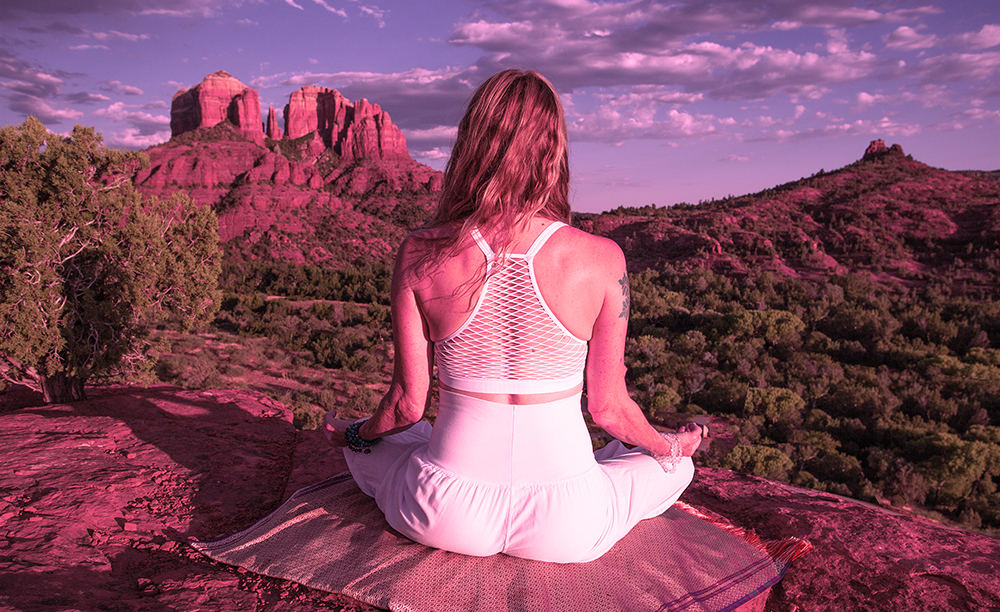Have you ever looked around in a public place and noticed just how much tension and rigidity abounds? It shows itself in the body.
The jaw is set. Shoulders are hunched. Fists might even be clenched. Breathing is shallow. There are lots of examples of how this rigidity presents itself, yet this tension is universal.
But why are people living in a state of contraction all the time?
Why are people holding their breath?
Our present reality – as we face the coronavirus pandemic – has only served to highlight this phenomenon. This problem.
Why is it a problem?
We’re taught from a very young age to shut down our energy. To be unconscious.
As babies and toddlers, we express ourselves spontaneously – our emotions/energy – through motion and vocalization. Yet, babies are often shushed when crying. The message to not express ourselves authentically starts right out of the gate. And we continue to hear that message all day, every day in our families, schools, religious institutions, even out in public.
A well-meaning stranger might say, “Don’t cry, here’s a lollipop.”
We learn that it is unsafe to be ourselves.
We learn to contract.
Whenever we face challenges or crisis in our lives, we tend to:
- hold our breath
- clench our jaw
- tighten our body
- constrict our throat
And we do this without even realizing what we’re doing.
Presently, there is the collective terror that might even rival the fear of COVID-19: it’s the fear of feeling our emotions. And while many emotions can be painful or difficult to process, it is when we don’t process them properly that we numb ourselves through tv, alcoholism, drug addiction, workaholism, etc.
We’ll do anything to avoid feeling.
When we start to develop emotional intelligence, however, we realize that there is no such thing as a positive or negative emotion. We understand that all emotions are valid.
But most of us try to pick and choose what we feel. Doing so, however, is like trying to suppress one wave on the ocean… it doesn’t work!
What if, instead of avoiding our emotions, we learned to take responsibility for them, to be with them fully?
How much more could we open up to life and all of its experiences?
How much richer could life be? How much more fulfilled could we become? How much more FREE?
This is where breathwork as a practice comes into play. It doesn’t have to be esoteric. It can be practical, tangible, and easily accessible.
Breathing consciously is one of the quickest ways to access our repressed emotions or disconnected parts of ourselves.
Imagine… what if you were experiencing yourself in a new way? What if you could connect the disconnect in the most authentic, embodied way possible?
When we open to breathing, we allow all of this oxygen, life force, energy, consciousness, connection to spirit (or universal intelligence, God – whatever word works)… we allow for that flow that is our birthright. We become a conduit.
We start to ask new questions:
- How much more can I open?
- How much more can I allow life to move through me?
- How much more can I allow spirit to live through me?
- How much more can I allow love to live through me?
Breath is the most direct route to feeling and connecting with emotion.
But we often don’t want to feel, so instead of just breathing through the emotion, letting it come up and moving through it, we hold onto it. We hold it in our body in an attempt to avoid feeling it, but end up feeling it in a low key way all the time!
It’s like trying to run away from your shadow!
I’m absolutely passionate about breathwork as a practice.
About three years ago, I started doing a weekly breathwork for a group of people that had requested it. We did this for an entire year and I got to witness the unfolding of what happened for these people…
…it was awe-inspiring! So, I have continued to offer it ever since. And with the advent of the pandemic, I have brought it online.
Maintaining breathwork as a practice is a coming home to oneself in a deep and profound way. The effects of this start to spill over into daily life organically as we connect to the self beyond the stories.
I have worked with a woman for three years, breathing with her on a weekly basis; in fact, she rarely misses a session. Her devotion has inspired me to show up in new ways each week: there’s a new theme weekly and I love creating a unique playlist for each session.
Breathwork is a visceral experience. An embodied experience.
You can have a blissful experience, or a wild one. Every session is different. But to make it truly effective – to help it spill over into your life – it needs to become a practice. If you don’t do anything with it afterward, it is more like a temporary high.
It’s so easy to get up off the mat at the end of the session and leave that experience there. And that is such a shame!
So, I ask people, “What are you going to do with what you learned about yourself? What can you do to really anchor in what you learned?”
And I give them homework. Directives to help them receive this teaching from themselves. To help them create effective ways of establishing these new neural pathways in their brains. Then it truly becomes transformative.
The breathwork didn’t create anything that wasn’t already there.
Instead, you get to experience how amazing you really are and then bring that into the rest of your life.
If you would like to experience the incredibly transformative power of breathwork as a practice, please feel free to join me every Sunday at: Breath is Prayer Ceremony



Recent Comments